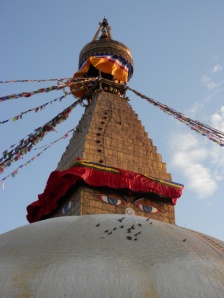I wrote this whilst living in Aomori City, Japan
Sometimes before the salsa class that I have been going to recently, I pop into the game centre a couple of floors down and have a go on the taiko drum game. A few times there I have noticed a boy of twenty or so, hanging around on his own. He is skinny with pale skin and short, sensibly cut hair; his mouth is slightly down-turned, making him look kind of serious. Whenever I have seen him, he is wearing a nondescript, dark coloured tracksuit and plain black shoes.
The last time I was there, he was standing with a group of boys of around the same age, who were playing a game which involved racing miniature plastic horses. The boys he was with kept doing something wrong – I think one or two of them were sitting on a part of the machine – so the centre attendant kept coming over to tell them off unsuccessfully.
Although a cursory glance might have lead one to believe that the boy in the tracksuit was a part of the other boys’ group, I thought otherwise: partly because I had seen him there alone before; also because none of them seemed to be acknowledging his presence. Mainly however, it was the differences in his and their appearances that gave the game away. His clothes and hairstyle looked like they had been chosen for him by somebody else, with practicality and value-for-money in mind. They on the other hand, wore brightly coloured sweat pants and parka jackets made from PVC fabric, their hair grown long, styled and dyed various brassy shades of caramel. He wore his clothes to protect himself from the elements. They wore theirs for this purpose too, but also as a means to engage in Rebellion™; to make a statement about who they were and how they wished to be seen by others.
So, it seemed that he was standing next to them, but not actually with them: close in physical proximity yet distant in all other measures. At one point one of the boys – maybe in a deliberate attempt to get rid of him – came and stood with his back turned right in front of him, blocking him off from the others. For an instant the boy looked put-out and angered by this, as if his rightful place in the group had been stolen. Yet seemingly he took the hint, as the next time I looked around from the taiko game he had moved and was standing a few metres behind me, once again on his own.
I finished the game, and headed off towards the escalator to go up to salsa. As I was leaving, one of the boys broke off from the group and ran up behind me, keitai in hand.
“Excuse me,” he said in Japanese. “Can I take a photo with you?”
“No,” I replied in English, turning away and walking off toward the escalator.

